The Americas ITU region stretches from the icy terrains of Canada in the North to the vibrant landscapes of Argentina in the South. It includes North, Central, and South America along with the Caribbean, encompassing a rich mix of cultures, economies, and geographies. From the tech hubs of Silicon Valley to the Amazonian rainforests of Brazil, this region is a blend of innovation and tradition. Telecommunications in the Americas sees a mix of mature markets with high internet penetration, like the US and Canada, and emerging markets aiming to expand their digital footprints.
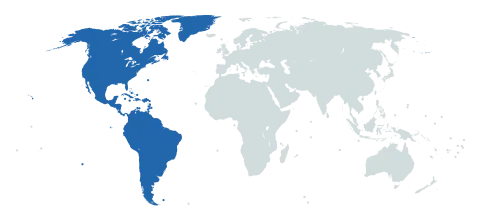
4G Coverage & Internet Use (% of Population)
Top Ten 4G Bands
Countries
The are 50 countries in this region.
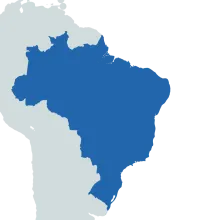
Brazil, a diverse and expansive country, presents unique challenges and opportunities in both technologies and telecommunications. Its vast geography, coupled with population clusters primarily in coastal areas, necessitates innovative solutions for connectivity. Brazil has adopted satellite technology to serve remote locations, such as the Amazon region, overcoming geographical barriers. In ...

The British Virgin Islands (BVI), a group of islands in the Caribbean, is geographically dispersed, consisting of around 60 islands and cays, with roughly 30,000 residents spread across 15 inhabited islands. This presents unique challenges in terms of telecommunications infrastructure due to the difficulty of connecting such a variety of islands. Technological innovation in BVI sees the country ...
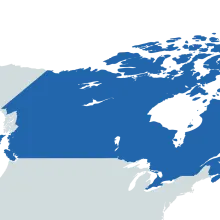
Canada, characterised by a vast land area and low population density, has unique challenges in telecommunications and technology infrastructure deployment. Most of its population is concentrated in metropolitan areas near the southern border, leaving the northern regions sparsely populated. This is exemplified in Nunavut territory, where extreme weather, isolation and rough terrain necessitate ...

The Cayman Islands are a British Overseas Territory consisting of three islands located in the Western Caribbean Sea. While the country's population is concentrated in the largest island, Grand Cayman, the demand for telecommunications services extends to the smaller islands, Cayman Brac and Little Cayman. Noteworthy is their implementation of undersea fibre-optic cables, an innovative solution to ...
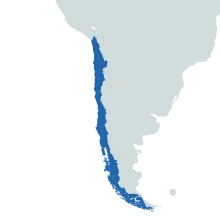
Chile, a long, narrow country stretching along South America's western edge, presents unique challenges and opportunities in terms of technology and telecommunications. With its diverse geography ranging from deserts in the north to mountains and glaciers in the south, the country has developed distinctive infrastructure solutions to cater to its nearly 20 million inhabitants distributed unevenly ...
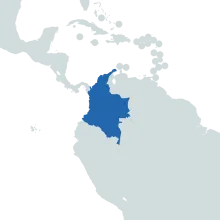
Colombia, set in the northwest of South America, is a nation of diverse terrain ranging from coastlines to rugged mountains. Its population centres, primarily found in the metropolitan areas of Bogota, Medellin, and Cali, are well connected through a widespread telecommunications network. However, meagre infrastructure exists in rural sections, causing a digital divide. To counter this, the ...

Costa Rica, a Central American nation with a population of over 5 million, is marked by diverse terrain encompassing coastal plains, central valleys, and mountain ranges. This geographical diversity poses unique challenges in terms of infrastructure development and technology distribution. The more densely populated regions, such as the Central Valley, enjoy better access to technology and ...

Cuba, an island nation in the Caribbean, has a population of around 11 million people, largely concentrated in urban areas such as Havana and Santiago de Cuba. The country's geographical isolation and the US embargo have historically posed challenges to its technological development and telecommunications infrastructure. However, Cuba has made strides in recent years, with the government actively ...

Curaçao, a small island nation and constituent country of The Netherlands, is located in the southern Caribbean Sea. The country comprises the main island and the uninhabited Klein Curaçao, with its population of approximately 150,000 mostly concentrated in and around the capital city, Willemstad. The nation is linked to the global internet via six undersea fibre optic cable systems. In terms of ...

Dominica, located in the Lesser Antilles region of the Caribbean Sea, is a mountainous tropical island with a population of roughly 72,000 people spread across its 750 square kilometres. Its population is largely concentrated along the coastal areas, while the rugged interior, including the Morne Trois Pitons National Park, is sparsely inhabited. Telecommunication infrastructure in Dominica is ...

The Dominican Republic, located in the Caribbean region, is a geographically diverse nation comprising mountains, plains, and coastal areas. With a population of around 11.1 million, the majority of people reside in urban areas, particularly in the capital, Santo Domingo. The country's topography and population distribution pose unique challenges to the development of infrastructure and technology ...
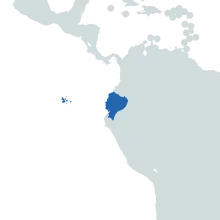
Ecuador, a South American country situated on the equator, features diverse geographical landscapes from coastal plains to highland valleys and Amazonian rainforests. This can pose significant challenges for technology and telecommunications infrastructure due to varied terrain and isolated communities. Regional disparities in population distribution are also apparent, with the majority ...
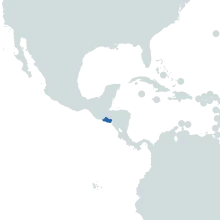
El Salvador, Central America's smallest country, is densely populated with over six million people predominantly residing in urban areas, including the capital, San Salvador. Its mountainous terrain, with the Pacific coast to the south, poses challenges for technology infrastructure, specifically telecommunications. Even so, El Salvador has made significant strides in digital connectivity, with ...

The Falkland Islands, an archipelago in the South Atlantic Ocean, comprises two main islands and around 776 smaller ones, with a population of approximately 3,700 residents. The islands' remote location and sparse population distribution pose challenges for technology and telecommunications infrastructure. However, the Falkland Islands has implemented innovative solutions, such as the launch of ...

French Guiana, a French overseas territory located on the northeast coast of South America, is characterised by its dense rainforest geography and a sparse population primarily concentrated along the coast. The capital city, Cayenne, is a significant hub for technology and telecommunications in the region. The country hosts the Guiana Space Centre, a major international spaceport with advanced ...